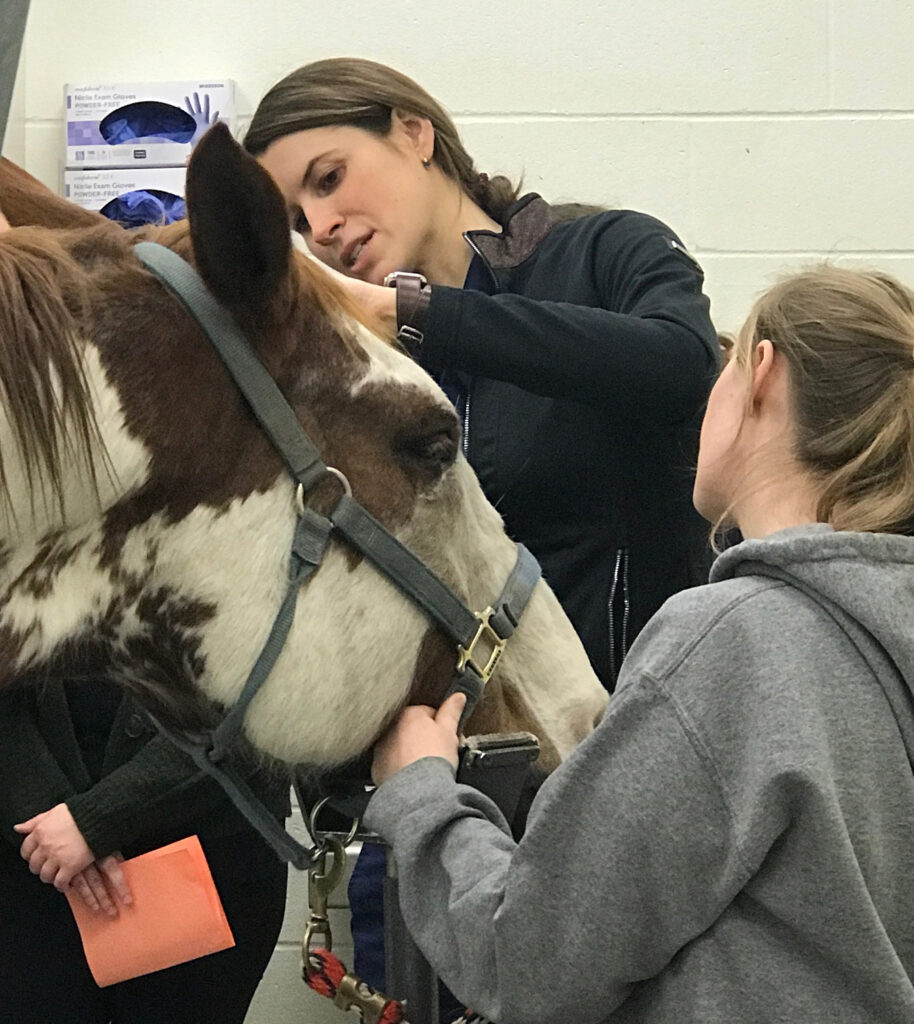
There’s not much margin for error when veterinary ophthalmologists treat horses with adnexal neoplasm.
That was the case when Firecracker was presented to the Large Animal Hospital at the Lloyd Veterinary Medical Center last summer.
Adnexal neoplasia is essentially cancer of the eyelids and squamous cell carcinoma is the most common one of these in horses. Horses with non-pigmented eyelids margins are predisposed. Throw in the risk factor of solar radiation and Firecracker had issues.
“The particular challenge with adnexal neoplasm is that we do not have a lot of extra tissue to lose,” said Dr. Mona Hoerdemann, equine surgeon and ophthalmology resident. “While we ideally excise the neoplastic tissue with a large margin this does not work for eyelids since that impairs their main function of protecting the eye.”
To save Firecracker’s eye, the ISU veterinary team had to explore adjunctive therapy options. One such option was photodynamic therapy (PDT), which utilizes light sensitive compounds that are injected into the surrounding tissue and accumulate within the cancer cells. Laser light of a specific wavelength is then used to excite the compound and damage the cancer cells, while causing little damage to the non-affected tissue.
Even though the procedure was successful, there is still a risk to Firecracker. He is susceptible to recurrence of the cancer. Rechecks will be required for the horse’s lifetime.
“Firecracker is now 10-month postoperative and there has been no evidence of any recurrence which is very encouraging,” Hoerdemann said. “The longer we get out from surgery, the better we will feel about it.”
It helps, Hoerdemann said, that Firecracker’s owner is very diligent and has purchased special UV-protective goggles (sunglasses) for the horse.
“The sunglasses look very fashionable, and he wears UV-protective fly masks at all times when outside,” Hoerdemann said.
November 2024

